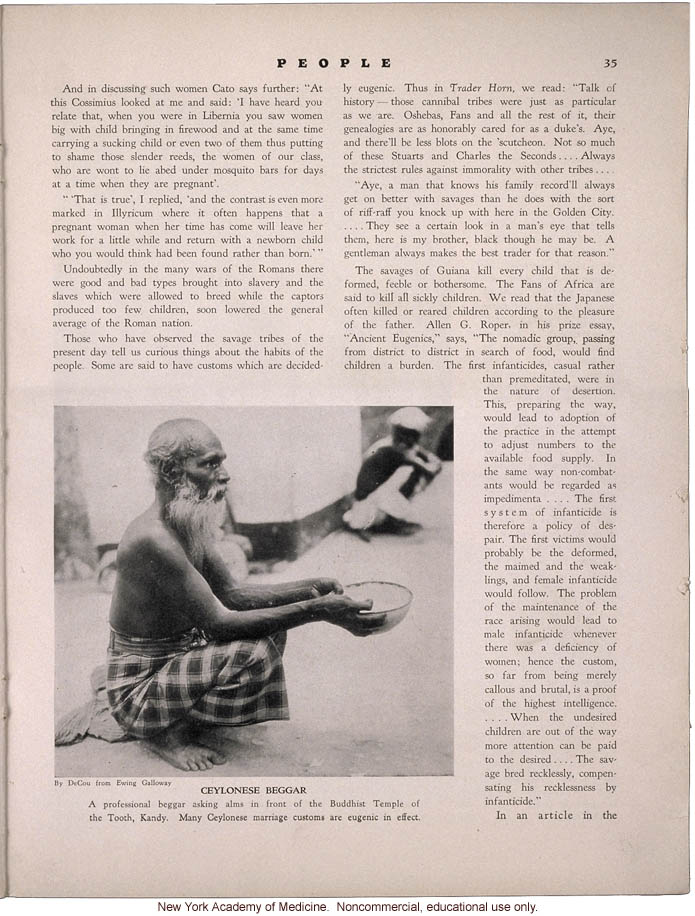PEOPLE 35
And in discussing such women Cato says further: "At this Cossiius looked at me and said: 'I have heard you relate that, when you were in Libernia you saw women big with child brining in firewood and at the same time carrying a sucking child or even two of them thus putting to shame those tender reeds, the women of our class, who are wont to lie abed under mosquito bars for days at at time when they are pregnant.'
" 'That is true,' I replied, 'and the contrast is even more marked in Illyricum where it often happens that a pregnant woman when her time has come will leave her work for a little while and return with a newborn child who you think would have been found rather than born.'"
Undoubtedly in the many wars of the Romans there were good and bad types brought into slavery and the slaves which were allowed to breed while the captors produced too few children, soon lowered the general average of the Roman nation.
Those who have observed the savage tribes of the present day tell us curious things about the habits of the people. Some are said to have customs which are decidedly eugenic. Thus in [italics]Trader Horn,[end italics] we read: "Talk of history - those cannibal tribes were just as particular as we are. Oshebas, Fans and all the rest of it, their genealogies are as honorable cared for as a duke's. Aye, and there'll be less blots on the 'scutcheon. Not so much of these Stuarts and Charles the Seconds... Always the strictest rules against immorality with other tribes...
"Aye, a man that knows his family record'll always get on better with savages than he does with the sort of riff-raff you knock up here in the Golden City. ...They see a certain look in a man's eye that tells them, here is my brother, black though he may be. A gentleman always makes the best trader for that reason."
The savages of Guiana kill every child that is deformed, feeble or bothersome. The Fans of Africa are said to kill all sickly children. We read that the Japanese often killed or reared children according to the pleasure of the father. Allen G. Roper, in his prize essay, "Ancient Eugenics," says, "The nomadic group, passing from district to district in search of food, would find children a burden. The first infanticides, casual rather than premeditated, were in the nature of desertion. This, preparing the way, would lead to adoption of the practice in the attempt to adjust numbers to the available food supply. In the same way non-combatants would be regarded as impedimenta... The first system of infanticide is therefore a policy of despair. The first victims would probably be the deformed, the maimed and the weaklings, and female infanticide would follow. The problem of the maintenance of the race arising would lead to male infanticide whenever there was a deficiency of women; hence the custom, so far from being merely callous and brutal, is a proof of the highest intelligence. ...When the undesired children are out of the way more attention can be paid to the desired... The savage bred recklessly, compensating his recklessness by infanticide."
In an article in the
[photo][photo credit]By DeCu from Ewing Galloway
[photo caption]CEYLONESE BEGGAR
A professional beggar asking alms in front of the Buddhist Temple of the Tooth, Kandy. Many Ceylonese marriage customs are eugenic in effect.
[end]


